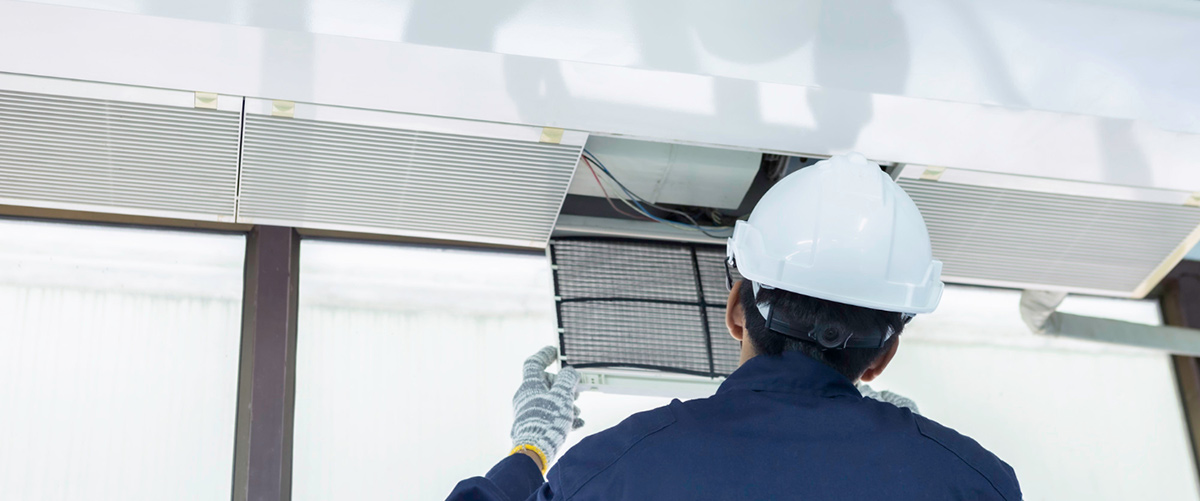Ductless HVAC systems were newcomers to the American market some time ago but their popularity has risen and now many homeowners prefer these systems. We share with you the pros and cons of a ductless heating and cooling system.

What Are Ductless Heating and Cooling Systems?
Pros of a Ductless Heating and Cooling System
- Ease of Installation
- Highest Efficiency
- Zoned Heating/Cooling
- Cost-Effective
- Space Savers
- No Heat Loss
- Noiseless Choice
- Disadvantages of a Ductless Heating and Cooling System
- Higher Up-Front Cost
- Mounted Units
- Higher Need for Maintenance
What Are Ductless Heating and Cooling Systems?
A ductless HVAC system is also called a ductless mini-split system. As the name suggests, it is a smaller version of a regular split HVAC system, but it does not have ducts or vents. Just like the split HVAC systems, they have two parts.
The compressor or condenser unit lives outdoors while a mounted air-handling unit resides inside, blowing in heated or cooled air. The indoor unit is called ahead. Multiple heads can be installed and connected with the compressor through dedicated wires. Each head has a coil and a blower fan which throws in the treated air, controlled by a remote.
Small holes of approximately 3-inches in diameter allow the tubing to carry treated air from the compressor to fans housed in the inside units. These systems offer zoned air conditioning, customized to the users’ needs. The adjustable thermostat on the inside unit allows the users to set their desired temperature for immediate results.
Pros of a Ductless Heating and Cooling System
So, what makes the ductless HVAC system so popular? Let’s find out by having a look at their benefits.
Ease of Installation
Since these new-age ductless systems do not have ducts, vents, or drains, they are quick and easy to install. The technicians will therefore charge you less for installation. They will only need to make some holes for letting the tubes and wires through to connect the two split components. The indoor unit is mounted easily on a wall mount.
Highest Efficiency
In terms of energy consumption, ductless systems are the most efficient and cost-effective. Most new models offer a SEER rating of above 30 which is the highest compared to other kinds of systems. They cut down your energy cost by 50% which leads to lower monthly electricity bills.
Zoned Heating/Cooling
Central air conditioning is becoming a thing of the past due to this zoning feature of ductless HVAC systems. Now you can set different temperatures for different areas/rooms of your home or office, as per your needs. Multi mini-split systems can heat or cool up to eight different rooms, with each indoor unit connected separately with the outdoor unit. They are mounted in such a way as to maximize the airflow through the room, offering an enhanced user experience.
You May Want to Read: When Is The Best Time For An Air Conditioning Replacement?
Also Check Out: The Average Cost to Repair Furnaces in Denver [Cost Guide]
Cost-Effective
Due to their high-efficiency energy saving, they put much less of a strain on your wallet monthly when it comes to paying the bills. Additionally, the ease of installation and service costs less because the technicians charge less as compared to larger units with complex ductwork.
Space Savers
Mini-split ductless HVAC systems are smaller in size and occupy less space than conventional systems. They fit everywhere and reach places which ducts cannot. Other duct-based systems take up space in the basement, attic, or occupy the inside of the walls whereas amounted
the indoor unit provides heating/cooling which easily reaches all corners of the space it is installed in.
No Heat Loss
Conventional duct-based systems face the loss of nearly 25% of their heated or cooled air as the air moves through an array of ducts and vents. In this ductless HVAC option, the treated air does not go to waste.
Noiseless Choice
Since the compressor and condenser system is located outside, unlike conventional indoor furnaces, the ductless systems are rather quiet and provide a more tranquil experience.
Disadvantages of a Ductless Heating and Cooling System
How Do I Cool the Second Floor in My Denver Home?
While the ductless HVAC system has many benefits, there is a bit of a downside to them as well. Their few drawbacks include:
Higher Up-Front Cost
If you want to install a ductless HVAC system throughout your house or in a lot of rooms, you will have to pay a high cost for buying indoor units for each room. However, the price might still be lower as compared to other systems with expensive ductwork.
Contact the experts at JD’s Plumbing Heating & Air Conditioning for an estimate of the cost.
Mounted Units
The vented systems are inconspicuous as people usually overlook vents in a room. However, the mounted indoor air handling unit can be an eyesore for some people who don’t approve of seeing a machine up on the wall of their room.
Higher Need for Maintenance
Since the tubes are smaller, the possibility of accumulated debris is higher, especially in houses with kids or pets. Ductless HVAC units must be thoroughly serviced by professionals at least once a year. The air filters should be cleaned by the homeowners regularly at least once every month.
Still not sure about which HVAC system suits you best?
Let the experts at JD’s Plumbing Heating & AC solve your worries and give us a call!




